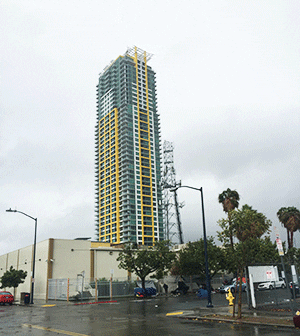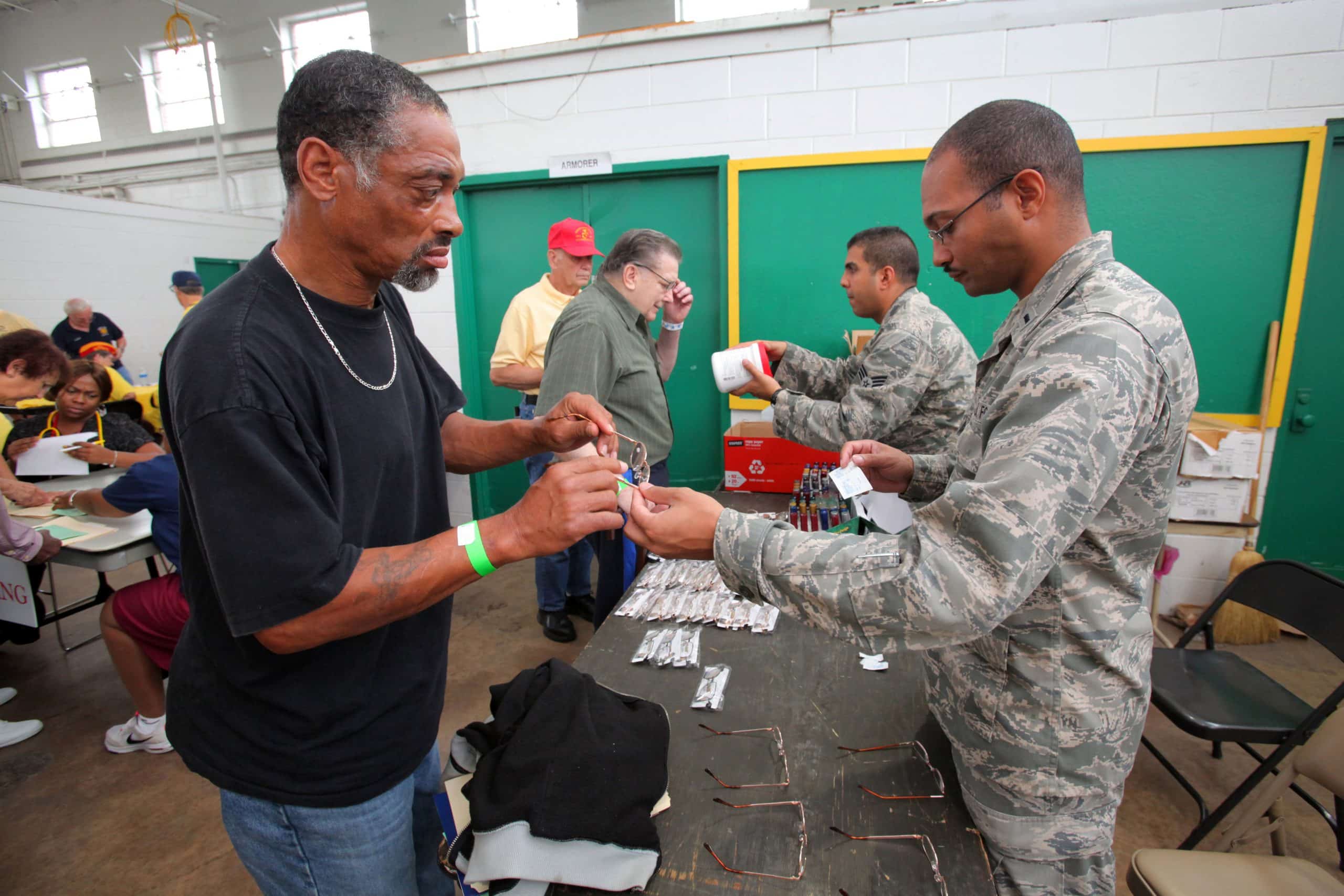
Amidst the broken tree branches and debris, scattered and soaked in the storm water were large black trash bags that homeless people had used to protect themselves. I saw helplessness in the eyes of an elderly couple as the rain whipped at them from every direction, drenching their belongings. An orderly line of about a half dozen people waited on the sidewalk for their turn to use the portable bathrooms, seemingly numb to the pouring rain. A series of blue tents clustered under the freeway bridge, sharing a tarp, and a young woman was braving the gusty winds to stand at that intersection, her hands clenching a soaked cardboard sign that simply read, “Homeless, Hungry.”
In the background, I saw construction cranes idling in the sky above them, poised to continue building a teal-colored luxury condominium tower with yellow and white accents.
America’s Finest City has an ugly problem.
The homeless population in San Diego is among the four largest in the nation and getting worse, with over 8,700 people living without shelter. And while this kind of weather is rare in San Diego, it is not new, yet even after anticipating the storm for months and knowing the severity of our homelessness problem, there was marginal galvanization of resources by local government. Simultaneously, the city was able to commit hundreds of millions of dollars in public funds for supporting downtown development with an expanded convention center and a Chargers stadium that the NFL does not want, all of which will likely be built in the very neighborhood these people call home.
In this era of increased inequality, socially-blind urban planning is morally questionable. Specifically, on the issue of homelessness in America, there are three problems that planners need to pay attention to:
- Social impacts of planning are relegated to the margins. Planners often consider development projects from the sterile perspective of social value-free growth. Social issues such as homelessness appear as ancillary considerations, footnoted, or completely omitted in normal project planning and permitting processes. I have served almost three years as a board member of San Diego’s downtown planning and permitting agency, yet not once has the issue of displacement been addressed by the agency when approving an unsubsidized housing project. Not once has a “vacant lot” that was at the time housing homeless people been treated as anything but developable dirt. Most developers proposing luxury housing projects in downtown get away providing no inclusionary housing and mandatory minimum fees. And there is a concerted effort in the street-front design of these towers to ensure that the homeless cannot sit, sleep or stay in the area.
- Lack of accountability. Housing the homeless is either the responsibility of underfunded public housing authorities, some other level of government, social service providers, or a combination of all of them with no clear mandate. Affordable housing projects are separately funded and approved, and constitute a shrinking share of the development pie, rarely making a dent in meeting the housing need. Homeless services are offered by a hodge-podge of charities and government agencies, each working in its own silo, with its own motives. In the meantime, the homeless and at-risk-of-homelessness often have to wait for years for housing assistance, by which time they are structurally unable to recover.
- Mismatch between planning costs and benefits. Every planning action, whether it be a land-use zoning, subdivision mapping, or density and use change, comes with an external cost to society. This cost includes the impact to infrastructure, environment, and people (such as displacement and poverty). When planning costs are not passed on to the developer as planning gains (in the form of agreements or exactions), the public is de facto subsidizing private profits. This is an important reason why we do not have the resources to address homelessness, especially in markets of high demand-driven growth with runaway land values.
The primary function of a city planner is to serve its residents, since those who live here are the life of the city itself. In the words of the San Diego teen that became the face of the award-winning documentary, Inocente, “Just because I am homeless does not mean I don’t have a life. I do have a life.”
Photo: Makeshift homeless shelters beneath new construction in downtown San Diego. Courtesy of Murtaza Baxamusa.





For those interested in more on ethics in planning, you might want to take a look at Tom Sanchez and my book, “Planning as if People Matter: Governing for Social Equity,” Island Press, 2012, the chapter on ethics in planning.